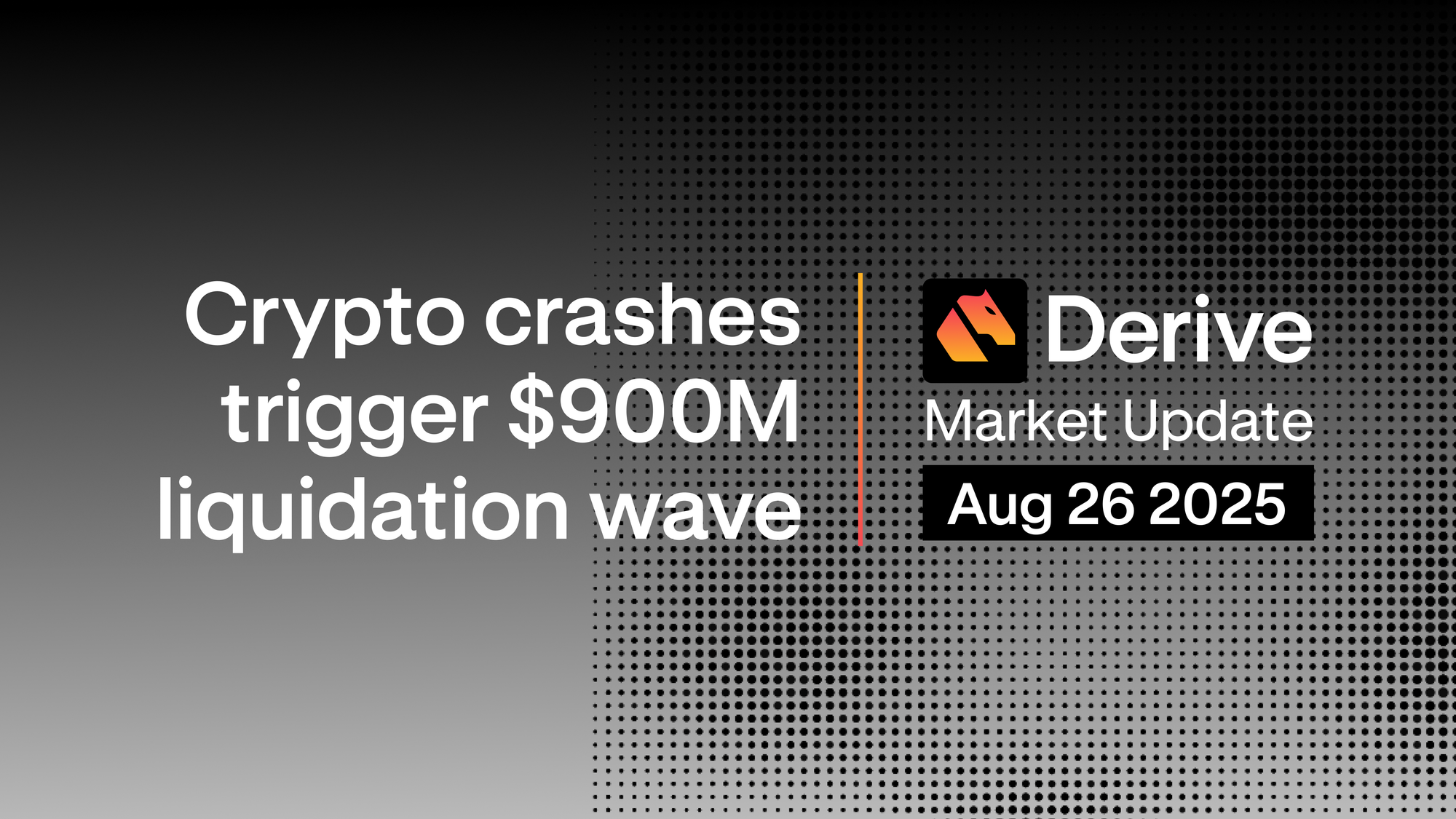By Dr Sean Dawson and Greg Magadini
Introduction
Despite trading at all-time highs, Bitcoin’s implied volatility (IV) has dropped to its lowest levels in years. Meanwhile, ETH’s IV has remained elevated and sticky.
This divergence is visualized in Figure 1, which plots the 30-day ATM IV for both BTC (orange) and ETH (blue). Figure 2 shows the absolute spread between these quantities which has consistently widened and accelerated since Q1 2025.
This paper aims to answer the following question:
Why — despite Bitcoin reaching new highs — has its implied volatility collapsed, while Ethereum’s has remained elevated?
We argue that this divergence is structural, rooted in differences in institutional participation, ETH’s role as “digital oil” and convertible bond plays pioneered by MicroStrategy.
Figure 1: 30 day at-the-money implied volatility for ETH and BTC.
Figure 2: Time series of the difference between ETH and BTC ATM volatility for the 30 day tenor between January 1 2024 and mid July 2025.
Institutional Flow
To date, BTC has had far more institutional adoption than ETH. Consequently, we’ve seen far more structural price support along with a more developed derivatives market, leading to both lower realized and implied volatility.
First, there’s the ETF market. Currently, there’s $154 billion held in BTC ETFs while there’s “only” $15.3 billion in ETH ETFs, a difference of literally 10x. At time of writing, BTC’s market cap is $2.35 trillion while ETH’s is $403 billion, a difference of approximately 6x.
This means that ETF penetration relative to market cap is materially deeper for BTC, i.e. a larger share of Bitcoin's circulating supply is held in passive, non-reactive vehicles like wealth managers and institutions seeking digital asset exposure with traditional wrappers.
Consequently, a larger portion of BTC is now “locked” in ETF structures thereby reducing free float. One could argue that this reduced tradable supply should actually increase volatility since supply will now be constrained. However, BTC held in ETFs is typically owned by long-term, passive investors who are less reactive to market noise. As a result, while the reduction in float could possibly raise sensitivity to shocks, the simultaneous decline in speculative trading activity may offset that effect.
We can also look at futures (both dated and perpetual); these are currently the most traded derivative instruments in crypto.
Right now there’s 730K BTC futures open interest across various exchanges from Binance, OKX and the Chicago Mercantile Exchange (CME). The latter is a traditional exchange typically walled off to retail investors, so we can assume that most volume that goes through here is institutional flow.
Currently, there’s 162K worth of BTC open interest (22% of OI across all exchanges) on the CME, meaning the real number from institutional flow is probably significantly larger.
The situation is quite different for ETH. Over all exchanges, there’s 14.5M ETH open interest on futures contracts and only 12% of this is on the CME. So again, we see a stark contrast in the institutional footprint between BTC and ETH futures markets. While over one-fifth (22%) of BTC futures OI originates from CME, only ~12% of ETH futures OI is routed through the same channel. This suggests that ETH futures activity remains predominantly retail, where leverage and speculation are more prominent.
ETH Levered Yield
While BTC is (and will always be) a universal store of value, ETH prides itself as the digital oil of a global on-chain economy. Simply put, for many BTC is a buy-and-hold store of value and there’s not too much volatility that can accompany that. ETH, by contrast, is firmly plugged into the world of DeFi, levered looping and yield farming.
In Figure 3 we show the top 10 protocols by TVL on Ethereum. Note the familiar faces of Lido, Eigenlayer, EtherFi and Pendle. Unlike for BTC, there’s an inherent rate trade for ETH:
- stake your ETH in Lido to earn staking yield (~3%),
- deposit this onto Eigenlayer for points (more yield)
- Bring to Pendle to earn more (fixed!) yield from PT tokens
- And – crucially – lever loop this using lending protocols like Aave, Morpho and Euler.
So now there’s potentially a very lucrative trade on the table; if you’re willing to take some risk you can pay some interest rate (probably 5-7%) and earn 10-15% (or more) on your ETH! This trade is extremely common and was especially so in mid 2024 at the height of points mania.
But with this looping comes risk; during even a moderate downturn, a highly levered position can get liquidated. This can trigger a cascade of selling and consequently sharp spike in realized volatility as well as demand for downside protection which further increases (implied) volatility.
Figure 3: Top 10 protocols on Ethereum by TVL. Note all either provide simple yield (staking, etc) or facilitate the levering of said yield.
MicroStrategy
Finally, we have MicroStrategy (MSTR) whose founder and CEO Michael Saylor is arguably the most well known BTC evangelist. As of mid-2025, MSTR holds over 226,000 BTC, worth more than $27 billion financed through convertible bonds. Basically, investors give MSTR cash to buy BTC and, instead of paying interest, MSTR gives investors call options on MSTR.
Since MSTR is essentially one large pool of BTC, these convertibles functionally behave like call options on Bitcoin, embedded within a bond. This suppresses volatility in two important ways.
First, institutions can use these options to gain convex leveraged exposure to BTC’s upside without needing to buy BTC directly or bid up crypto options. This reduces demand for outright volatility in the options market.
Second, these investors are typically sophisticated and hedge out their directional risk, either by shorting MSTR equity or using BTC CME futures. This hedging creates mechanical, non-speculative flow that stabilizes price action and dampens volatility even further.
Importantly, there is (currently!) no equivalent in Ethereum (though that will soon change with on-chain ETH Strategy and the Ether machine). Only recently have publicly traded companies like Bitmine Immersion Technologies with the help of Tom Lee and the recently announced Ether Machine begun executing similar style ETH acquisition strategies. None, however, are at the scale of MSTR. As a result, ETH remains exposed to more volatile, sentiment-driven flows.
Conclusion
Bitcoin’s collapsing implied volatility reflects a structural shift in market dynamics; driven by institutional adoption, passive inflows, and sophisticated hedging flows that dampen price swings. In contrast, Ethereum remains more speculative and structurally levered, keeping its volatility elevated despite broader macro calm. As with all things in crypto, this can change quickly.















